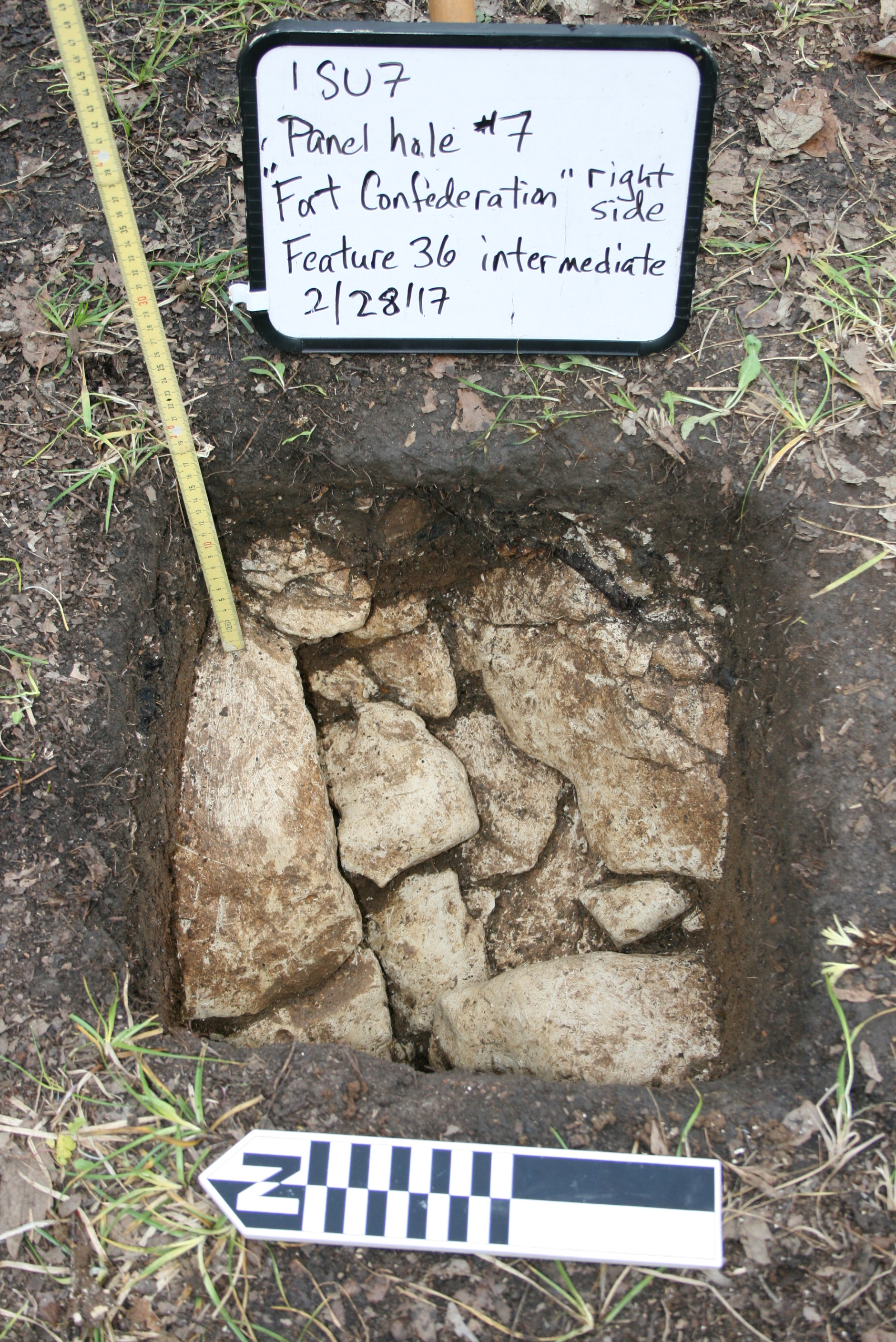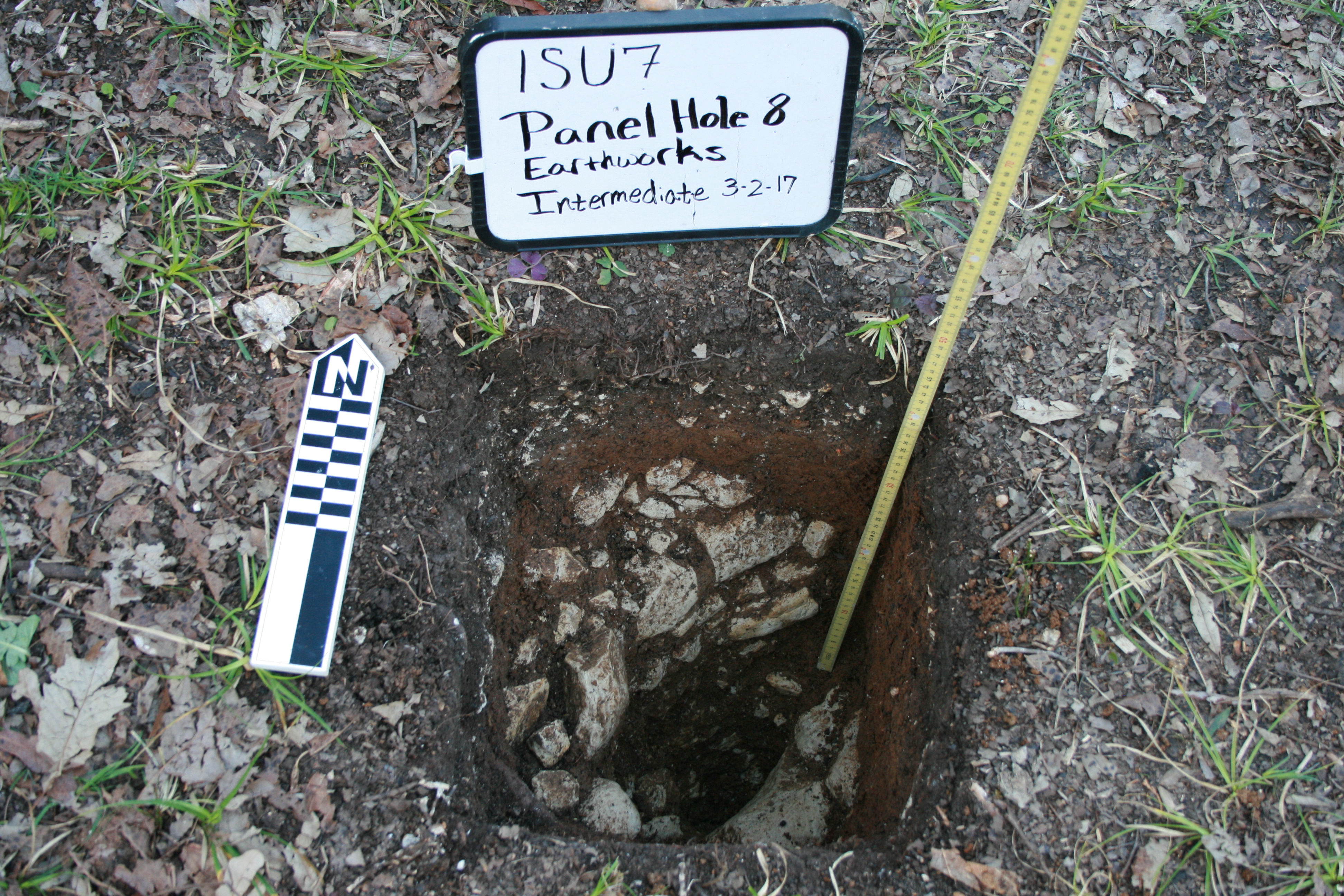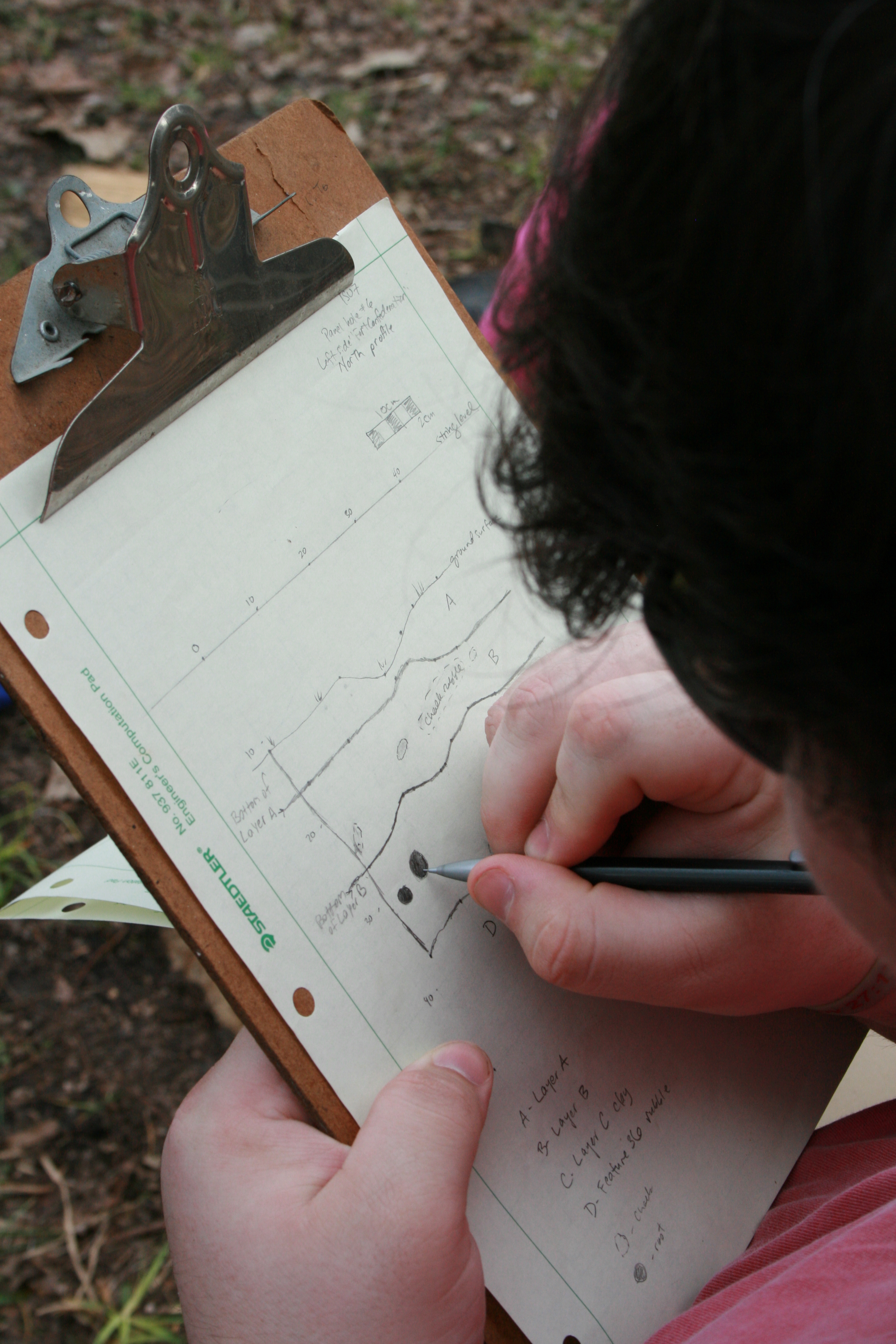by Valencia Moore
Today (February 28, 2017) was an awesome day at field school. I
have learned a lot over the past couple of weeks from my peers, Dr. Dumas, and
Mr. Meredith. Myself, Skyler, Natalie, Cory, and Dr. Dumas were all present and
ready to work. Once we arrived at the fort, inside the earthworks of Fort
Confederation to begin working, we discovered a muddy mess due to the previous
days of rain. After removing the plastic tarps used to cover the holes from the
rain, we got right to work.
Cory and Skyler begin cleaning up panel hole
6 and later in the day they were taught how to draw profile walls. It is
important to have a drawing of the profile wall for each unit so the excavator
or reader of the work will have a visual aid on what the unit look like before
it is refilled with dirt or destroyed by nature. I continued to remove Layer C
clay from panel hole 7 and noticed that the large pieces of chalk that I worked
around did not appear to be in any specific arrangement. No artifacts were
found in this layer of soil. Natalie continued to dig out the clay in panel
hole 8 and found decayed seeds; as of now, we are not sure what type of seed they
are. She has also found a lot of chalk packed into the clay. Dr. Dumas is not sure yet what this is.


Moving right along to Thursday, March 2,
2017, everyone was present and we had a few visitors. Black Belt Museum staff
James Lamb (director), Brian Mast (public historian), Tim Truelove (technician),
and Wesley (student volunteer) came to visit us today and to help complete some
tasks throughout the fort. They used small, strong magnets in the ravine to see
if they were useful for finding metal artifacts. They didn’t find anything, so
the magnets are probably not strong enough for pulling things out of the mud. Cory
and Skyler finished their drawings of the profile walls for panel hole 6. Dr.
Dumas and I drew a superior view of panel hole 7 in depth. In addition, I began
learning how to draw a profile wall. It was not an easy task, but once I got
the basic instructions down it became an easier task to complete.

Throughout
the remainder of the day everyone continued to work on what they had previously
started and worked until the end of class. But wait there is more! Natalie
continued to work on panel hole 8 and sorted through a five-gallon bucket of
soil from Layer C by hand and found no artifacts. The clay is almost impossible
to screen and has not yielded anything but the mysterious seeds and chalk so far. I hope
you enjoyed my blog and I hope to hear from you soon with any questions.